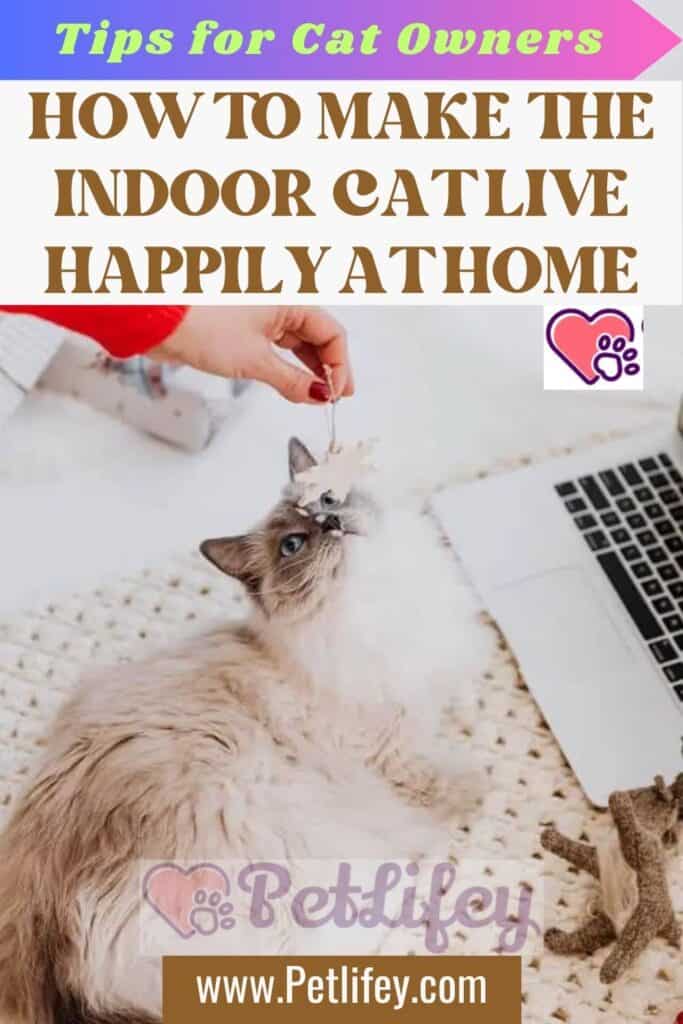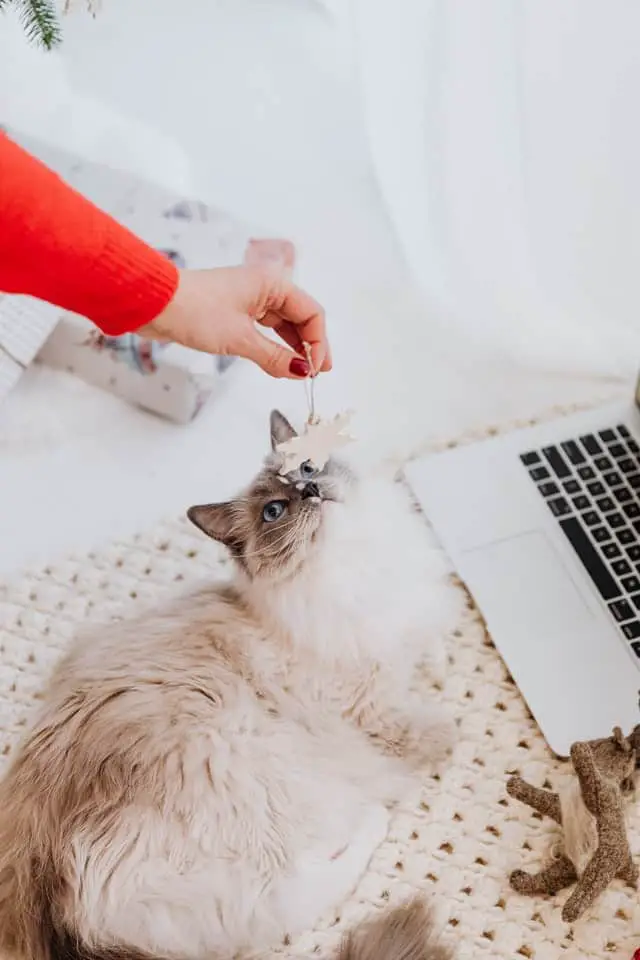
A cat that lives outside the home is perhaps happier because it satisfies its primitive instincts, but an indoor cat is safer. So how to make his life happy at home?
Recently, cats have been victims of bad publicity. In fact, recent research found that domestic cats that roam in semi-freedom kill 390 million animals a year in Australia. Most of these animals are native species. To protect native wildlife, which has never evolved with such an efficient predator, it is essential to keep our cats at home, all day, every day. But it’s not just for possible prey. Even cats can risk a lot when they are around: an indoor cat may live a more boring life, but certainly safer. So how can we help our cat to be happy at home, safe from external dangers?
Indoor and outdoor life
In Australia, Canberra is at the forefront of introducing initiatives such as a “cat curfew”, and rangers can even hijack cats that roam freely around the declared areas, with violation fines of up to US $ 1118.69. This type of operation is likely to be followed up in other cities as local authorities become more proactive.
Some people may think that measures like these are excessive. But keeping cats inside our home can actually be done in the best interest of the kitty as well as the environment. An indoor cat actually has a lower risk (even of death) than an outdoor cat, according to statistics.
Cats live substantially longer and safer lives if the environmental dangers that are always lurking in the free life outside are eliminated. A life exclusively inside (or at least outside but controlled) precludes the possibility of many common and important causes of life-threatening trauma. The most significant risk is being injured or killed by a vehicle (cars, trucks, motorcycles), particularly for young cats who have not yet learned the dangers of traffic.
Other animals can prey on cats. Dogs are the most common risk and your local vet will certainly be able to testify to the horrific injuries that cats have suffered when rescued from dogs. Poisonous snakes, lizards, urban foxes and dingoes (only in Australia, of course) also endanger cats. Tick paralysis is another possible risk in some areas.
Cats, especially sexually active males, are territorially aggressive and fight each other. And fighting cats are commonly infected with the feline immunodeficiency virus which can spread, along with other viral and bacterial pathogens, through the transfer of blood during combat. Additionally, cats in the wild that catch mice and rats that have eaten poisoned bait can be secondarily poisoned. Other things are also toxic to cats, such as lilies and antifreeze, and some cats are maliciously poisoned.
Is it cruel to deny cats outdoor life?
Basically, most cats can be totally happy living indoors – but as owners, we need to work hard to provide for their environmental and behavioral needs. Also returning to Australia, a 2019 survey of over 12,000 respondents found that many Australian cat owners do not adequately provide their indoor cat with what they need, especially when it comes to toileting and feeding. This can lead to a number of health and wellness problems, such as obesity and related diseases, behavioral problems, and urinary tract disorders.
For example, cats are very fussy when it comes to toilets, so you need to provide them with clean litter boxes (they don’t want to use something they think has dirtied another cat). Cats do not like to eat near their litter box, so we need to separate the area for their litter from the area for feeding in different rooms. They also need choice, so more than one litter box is needed.
Wellness problems can arise even if cats in the house cannot satisfy specific natural desires and behaviors. For example, cats love to climb and jump, and they love to sharpen their nails. It is necessary to provide the opportunity to carry out these activities indoors with a range of cat furniture.
How to improve life at home

Here is a list of simple ways (taken from a larger study) we can create a happy place for our cat, even if we live in a small apartment. As we will see, it is all very easy to achieve, without excessive effort or financial commitment. It takes so little to make our indoor cat happy!
Cleanliness and eating habits
- Have a litter box for each cat, even more than one (for example, three litter boxes for two cats), in different places and in quiet areas of the house. The clay litter is the best choice. We collect feces and urine soiled sand at least twice a day, and change the entire litter box once a week. Have one covered litter box (for privacy) and another open one, as a variety.
- Regular grooming with our cat’s favorite brush is fun and feels like a massage for him / her. It’s a good habit for his fur, and prevents both hairballs and matted fur.
- Consider providing some natural foods, such as raw chicken sticks. Raw meat requires chewing, massages the gums and gives cats a sense of ownership. Some cats will “kill” the sticks, knocking them to the ground a few times before eating them .
Set the space
- Cats need vertical space more than horizontal space. So let’s consider a ladder or other objects to get them to climb to the top of a cupboard or refrigerator. We use cat furniture that expands the vertical space.
- Cats like windows, so they can see what’s going on outside. We place perches so that they can look out.
- Kittens love having multiple points of safety and solitude. We install several cat baskets lined up, with a fluffy blanket, and ideally at different heights (for example, some at ground level and one very high – perhaps above a cupboard)
- Cats have a higher thermoneutral temperature than dogs and people, so they look for warm places. We can place some baskets in the sun or a basket in front of a heating source (radiator, stove, fireplace).
- Have a good security of the openings on the outside. Windows need mosquito nets to keep cats inside. Otherwise, “skyscraper syndrome” – in which cats fall from a height of two or more floors – can lead to serious injuries. The front doors need automatic closing mechanisms to prevent cats from getting out.
- We provide the cat with scratching posts and towers for exercise, and to satiate his desire to sharpen his claws. Vertical and horizontal scratch-resistant surfaces should be provided. Better here than on our furniture, after all.
- Consider installing a modular pet park (outdoor cat enclosures) or similar outdoor installation, which gives the cat an outdoor but risk-free experience.
Entertain the cat
- The ideal number of cats in the house is usually one or two. Having two litters is often ideal, as they are more likely to grow up and keep each other company when we are not at home. A cat usually only sleeps when we are absent, and can’t wait to get home. Three or more cats are not recommended, as they don’t always get along, which can cause more health and wellness problems.
- Cat toys can provide fun and exercise, and they don’t have to be expensive. A ping pong ball is cheap. Crumpled paper is very popular. Exercise wheels for cats are expensive, but they can be a lot of fun and provide good exercise.
- Food puzzles, which hide food as a reward, are another fun toy for curious cats, and can recreate hunting behavior for foraging for food.
- Let’s set aside some time a couple of times a day to pet and play with our cat.
- Some cats like to watch TV. There are special YouTube videos for cat audiences, showing moving objects, such as birds and fish, which cats can find fascinating and amusing.






